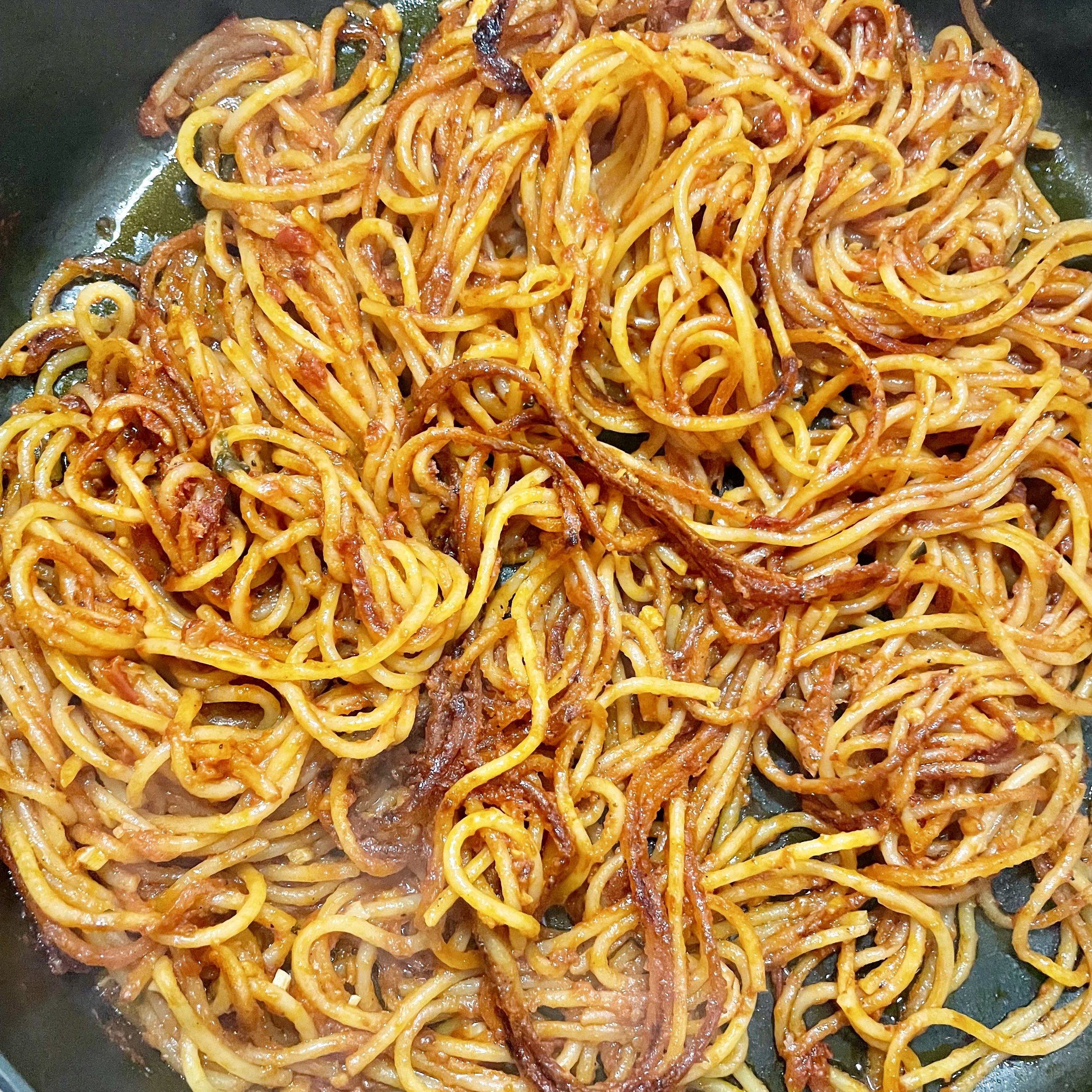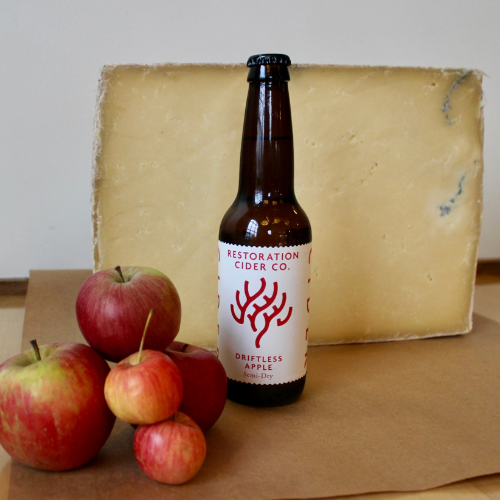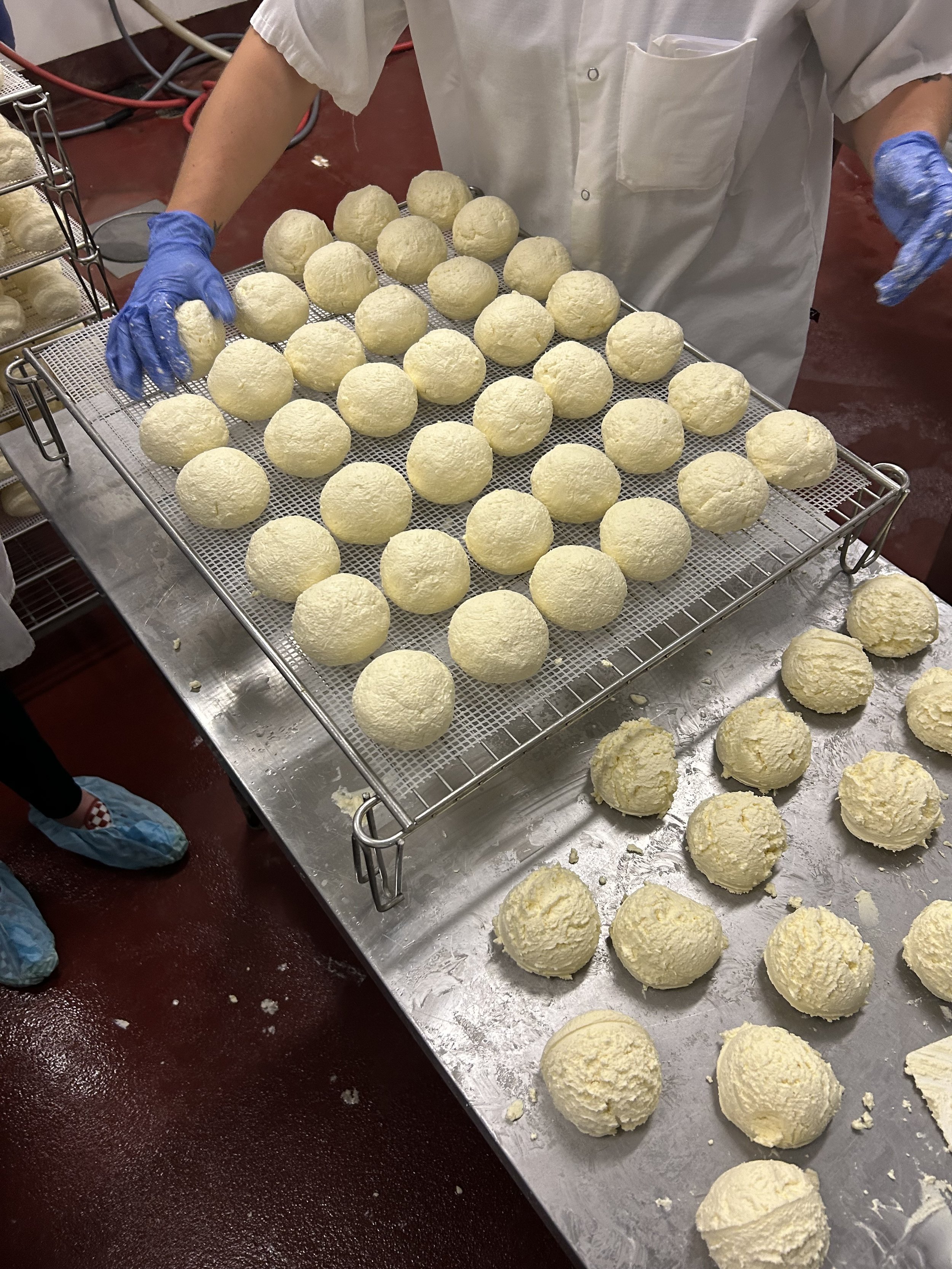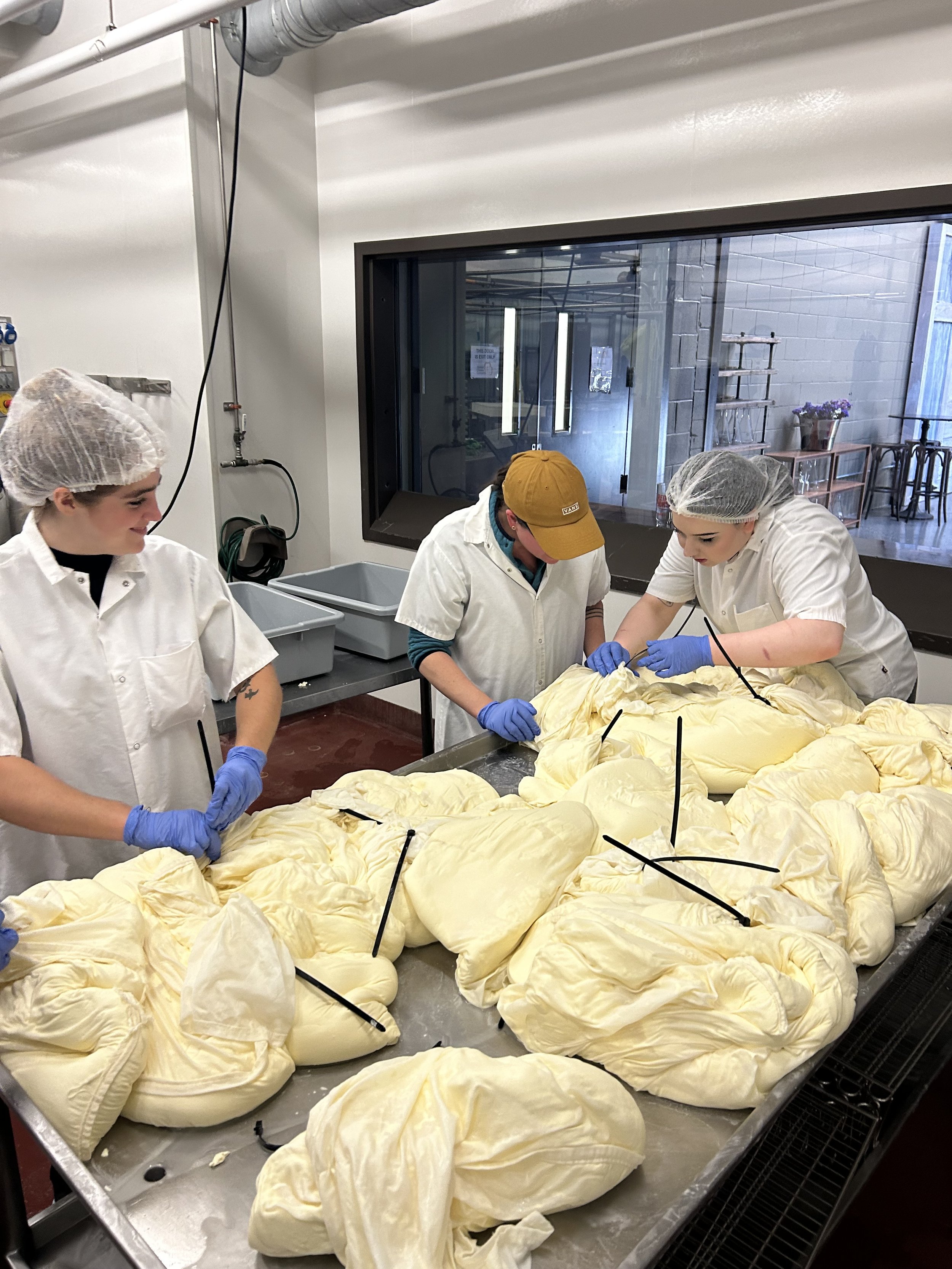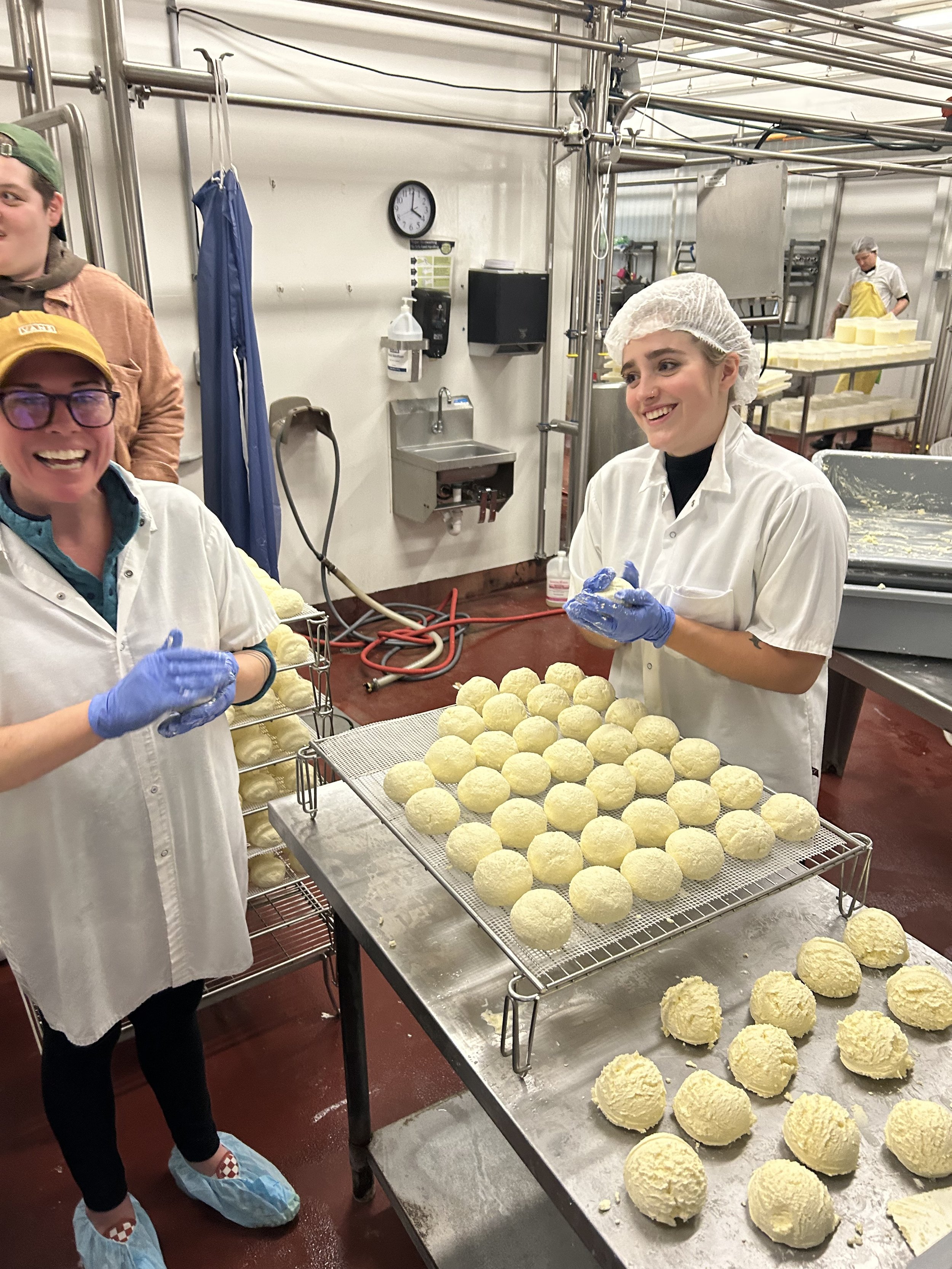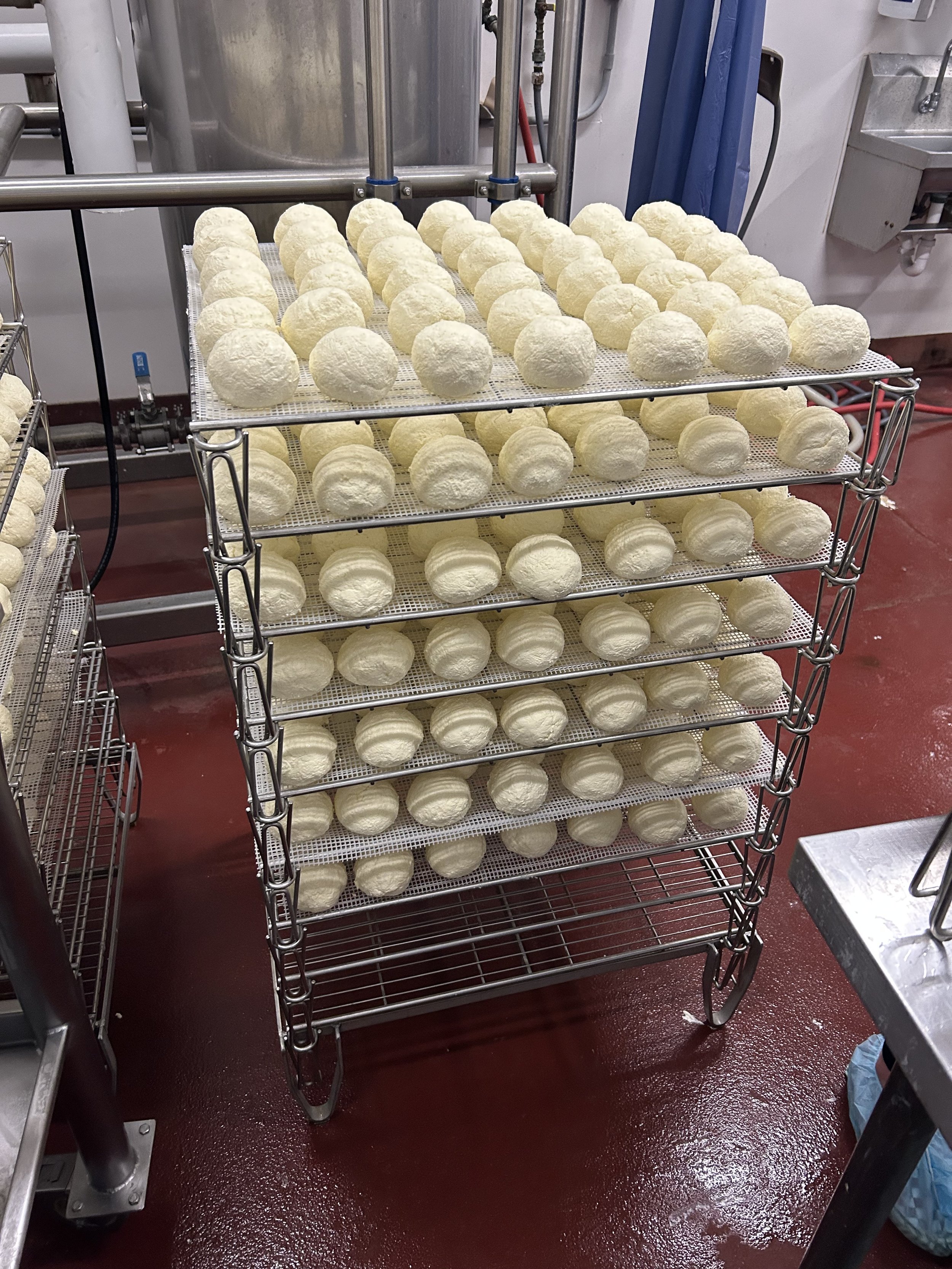by Austin Coe Butler
Bavette is a little known cut of beef here in the states. It’s similar to a flank steak in that it comes from the bottom sirloin, but it’s a bit thicker and more marbled, giving it a deeper, beefy flavor and remarkable juiciness. With this in mind, some believe that butchers conspire to keep the steak for themselves, which has given bavette the reputation as “the butcher’s cut.” It’s rich, beefy flavor can hold up to a stronger cheese like Roquefort. This recipe is a combination of two classics, the French bistro classic steak frites, which often features bavette, and the American steak house staple of steak and blue cheese.
4 tbsp beef tallow or vegetable oil
2 tbsp unsalted butter
12 oz shallots, thinly sliced
11 oz fingerling potatoes
1 lb Bavette
1 sprig of rosemary
2 garlic cloves, crushed
125ml dry red wine like Cabernet Sauvignon or Pinot Noir
4 oz Vermont Creamery crème fraîche
4 oz Maison Carles Roquefort, crumbled
2 tbsp beef stock
1 tbsp chives
Salt and pepper to taste
Season both sides of the bavette generously with salt and pepper. Allow it to temper while you prepare the rest of your ingredients.
Slice the fingerlings in half and place them in a pot of cold, salted water. Bring the pot to a boil then drop the heat to medium and cook for 8 minutes. Strain the potatoes and reserve.
Meanwhile, in a pan over medium heat, caramelize the shallots in a tablespoon of oil and a knob of butter. Reduce the heat and sweat, stirring often, until caramelized, about 20 minutes. If the shallots look like they are sticking or scorching, add a splash of water to release them. Despite what the internet may tell you, there’s no shortcut to jammy, caramelized alliums, so pour yourself a glass of wine, put on your favorite podcast, and enjoy your time babying those shallots.
Finish the potatoes. Heat two tablespoons of oil in a pan over medium high heat. Add the potatoes and cook for 15 minutes, stirring occasionally until lightly crisp and golden.
To cook the bavette, place it in a pan over medium high heat with a tablespoon of oil and cook for 4-5 minutes on one side depending on its thickness. Flip the bavette and then add in the 2 tablespoons of butter, garlic, and herbs, and baste the steak for another 4-5 minutes. Remove the steak from the pan when its temperature reads 10º under your preferred doneness, for example, if you prefer medium rare you would pull the steak at 125º and allow the residual heat to carry the steak to 130–135º. Allow it to rest for a minimum of 5 minutes.
To make the Roquefort sauce, begin by removing the excess fat, rosemary, and garlic from the pan. Over medium heat, deglaze the pan with the wine and scrape up the fond, those crispy, browned bits on the bottom of the pan. Add the stock and then reduce the liquid by half. On low heat, add in the crème fraîche and Roquefort, stirring until the cheese is incorporated. Add the chives and cut the heat.
To serve, cut the bavette against the grain. Plate with a the caramelized shallots and fingerlings. Serve with a generous spoonful of the Roquefort sauce. And, of course, if you have any leftover Roquefort you can crumble it on top of the steak. Bon appétite!






